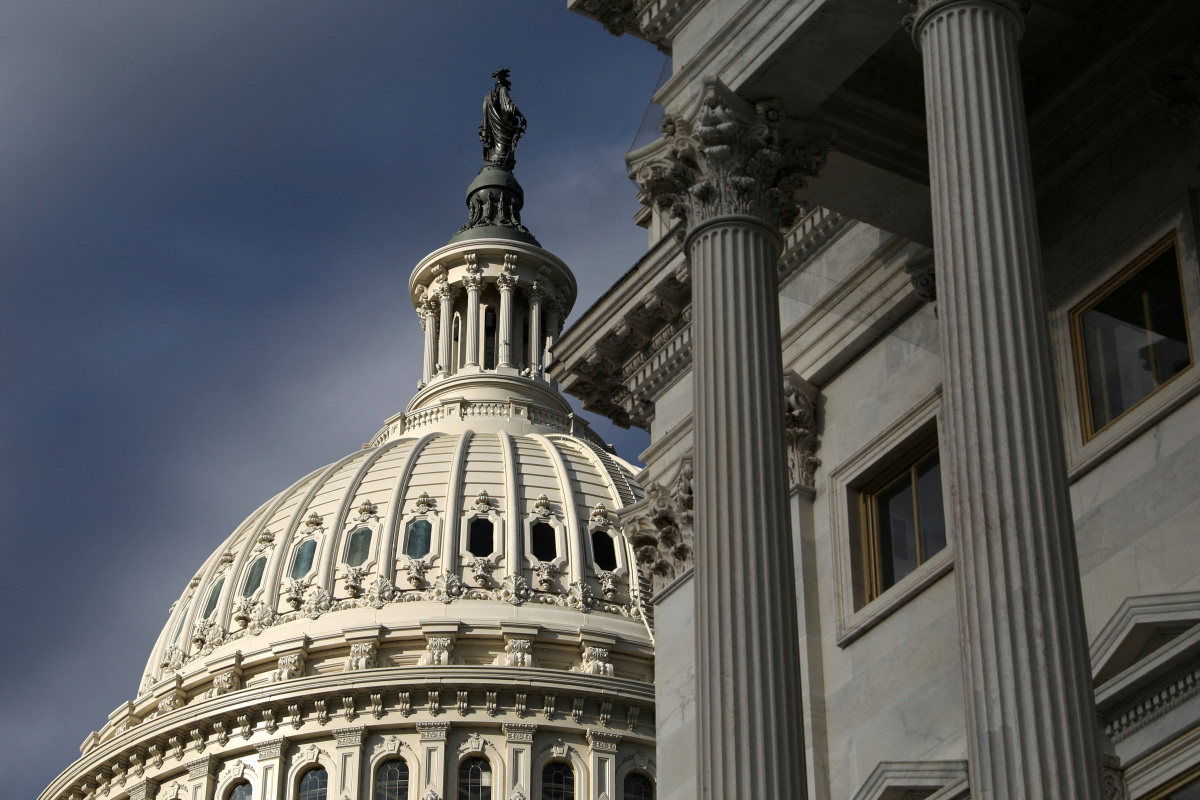US Debt Ceiling: August Deadline Looms, Warns Treasury Official

Table of Contents
The US faces a looming crisis as the Treasury Department warns of a potential default if Congress fails to raise the debt ceiling by August. This impending deadline presents a significant threat to the US and global economy, demanding immediate attention and decisive action. This article explores the implications of this critical issue, the potential consequences of inaction, and the ongoing political debate surrounding the US debt ceiling. Understanding the complexities of the US debt ceiling is crucial for navigating the economic uncertainty ahead.
<h2>The Urgent August Deadline and its Implications</h2>
The US debt ceiling is the legal limit on the amount of debt the federal government can accrue. Congress sets this limit, and it needs to be raised periodically to allow the government to continue paying its existing obligations, including Social Security benefits, military salaries, and interest on the national debt. Failure to raise the debt ceiling results in a default, meaning the US government would be unable to meet its financial commitments.
Treasury Secretary Janet Yellen has warned that the US could default as early as early August if Congress doesn't act. This isn't a hypothetical scenario; a default would have catastrophic consequences.
- Potential economic consequences of a default: A credit rating downgrade would lead to increased borrowing costs for the government, businesses, and individuals. Market volatility would surge, potentially triggering a stock market crash and a significant economic downturn. Interest rates would likely rise sharply, further impacting economic growth.
- Impact on global markets and international confidence: A US default would severely damage the global economy, shaking confidence in the dollar as the world's reserve currency. International investors might pull their money out of US assets, leading to a global financial crisis.
- Potential social security and government program disruptions: The government would be forced to make drastic cuts to essential programs, including Social Security and Medicare, to meet its limited resources, impacting millions of Americans.
<h2>Political Gridlock and the Ongoing Debate</h2>
The debate surrounding the debt ceiling increase is deeply entrenched in partisan politics. Republicans are demanding spending cuts in exchange for raising the debt limit, while Democrats argue that raising the debt ceiling is a separate issue from budget negotiations. This political gridlock is delaying crucial action and jeopardizing the nation's financial stability.
- Key arguments from both sides of the political spectrum: Republicans argue that raising the debt ceiling without addressing the nation's growing debt is fiscally irresponsible. They propose spending cuts across various government programs. Democrats argue that the debt ceiling should be raised without conditions, emphasizing the devastating consequences of a default. They propose a separate process for budget negotiations.
- Potential compromise solutions being discussed (or lack thereof): At present, meaningful compromise solutions remain elusive. Negotiations have been ongoing, but significant disagreements persist over the scope and nature of spending cuts.
- The role of political maneuvering and negotiation in resolving the issue: The current situation underscores the urgent need for bipartisan cooperation. Political maneuvering and strategic negotiations are crucial to finding a common ground and preventing a potentially disastrous default.
<h3>The Role of the Treasury Department</h3>
The Treasury Department plays a crucial role in managing the nation's debt. It's responsible for borrowing money to finance the government's spending and ensuring timely payment of all obligations. Given the approaching deadline, the department has already implemented extraordinary measures to temporarily avoid a default.
- Explanation of "extraordinary measures" and their limitations: These measures involve accounting maneuvers to temporarily free up cash. However, these measures are finite and will eventually be exhausted. Once this happens, the US would face a default.
- The communication efforts of the Treasury Secretary in warning of the impending deadline: Secretary Yellen has repeatedly warned Congress of the dire consequences of inaction, emphasizing the urgency of raising the debt ceiling.
- The department's role in managing the potential fallout from a default: The Treasury Department would be tasked with mitigating the economic damage from a default, but its ability to do so would be severely limited once a default occurs.
<h2>Economic Consequences of Defaulting on US Debt</h2>
A US debt default would trigger a severe economic crisis, both domestically and internationally. The ripple effects would be felt globally.
- Increased borrowing costs for individuals and businesses: Higher interest rates would increase borrowing costs for everyone, hindering economic growth and potentially leading to a recession.
- Potential job losses and economic recession: A default would likely cause widespread job losses and trigger a deep recession, potentially even a global depression.
- Damage to the US's global economic standing: A default would severely damage the US's credibility and international standing, affecting its geopolitical influence and economic power.
<h2>Potential Solutions and Paths Forward</h2>
Addressing the US debt ceiling crisis requires immediate and decisive action, prioritizing bipartisan cooperation and compromise.
- Short-term vs. long-term solutions: A short-term solution would involve raising the debt ceiling to avoid immediate default. However, a long-term strategy needs to address the underlying fiscal issues driving the national debt.
- Bipartisan cooperation and the need for compromise: Finding a lasting solution requires bipartisan compromise, including agreements on spending cuts and revenue increases.
- The role of fiscal responsibility and budget negotiations: The crisis underscores the urgent need for responsible fiscal policies and robust budget negotiations to prevent future debt ceiling crises.
<h2>Conclusion</h2>
The looming August deadline for raising the US debt ceiling presents a grave threat to the US and global economy. The political gridlock and the lack of a clear path forward highlight the urgent need for bipartisan cooperation and compromise to avoid a catastrophic default. Understanding the complexities of the US debt ceiling and its far-reaching implications is vital for both citizens and investors. Stay informed about the latest developments, contact your representatives to urge them to prioritize a responsible solution, and advocate for policies that promote fiscal responsibility and prevent future debt ceiling crises. Learn more about the US debt ceiling and its impact on the US economy.

Featured Posts
-
 Rochelle Humes London Fashion Week Hairstyle A Close Look
May 11, 2025
Rochelle Humes London Fashion Week Hairstyle A Close Look
May 11, 2025 -
 Jessica Simpsons Reality Tv Return Album Promotion Fuels Speculation
May 11, 2025
Jessica Simpsons Reality Tv Return Album Promotion Fuels Speculation
May 11, 2025 -
 Freires Next Fight Bellator Champion Takes On Jose Aldo
May 11, 2025
Freires Next Fight Bellator Champion Takes On Jose Aldo
May 11, 2025 -
 Grown Ups 2 Comparing The Sequel To The Original
May 11, 2025
Grown Ups 2 Comparing The Sequel To The Original
May 11, 2025 -
 Ny Knicks Vs Cleveland Cavaliers Where To Watch Time Tv Channel And Live Stream
May 11, 2025
Ny Knicks Vs Cleveland Cavaliers Where To Watch Time Tv Channel And Live Stream
May 11, 2025
